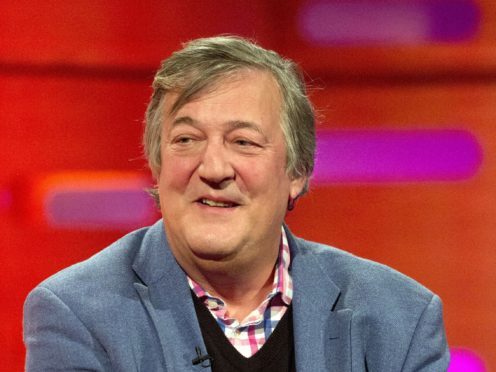Stephen Fry’s prostate cancer diagnosis led to a surge in referrals to NHS services and contributed to missed waiting time targets, it has been claimed.
Matthew Swindells, national director for operations and information at NHS England, said there had been an “extraordinary spike in demand” in recent months.
This was “largely driven” by the announcement that the TV presenter and comic had undergone surgery to have his prostate removed early this year, Mr Swindells told the Health and Care Innovation Expo in Manchester.
Fry, 61, urged “men of a certain age” to get themselves tested after revealing his diagnosis in February.
Figures from April to June, published last month, show 80.8% of patients with suspected cancer started treatment within 62 days of being urgently referred by a GP.
This is below the target of 85% for the 18th consecutive quarter, and the worst quarterly performance against this target since records began.
Mr Swindells said the drop in performance against cancer targets was a “complex story”.
“When we look at the data, there’s been an extraordinary spike in demand,” he said.
“I’m told largely driven by Stephen Fry getting prostate cancer and the media coverage of that.
For the last 2 months I've been in the throes of a rather unwelcome and unexpected adventure. I'm sorry I haven't felt able to talk about it till now, but here I am explaining what has been going on: https://t.co/uPorpiwstg
— Stephen Fry (@stephenfry) February 23, 2018
“We have seen increases in referrals into a number of the cancer specialties, particularly urology, in the sort of 15% level jump this year, which is unprecedented.”
Mr Swindells told the audience that while the numbers look “terrible”, the health service “treated more patients in the first quarter of this year within 62 days than it ever has before”.
“The NHS managed to respond to a 15% jump in demand with about a 12% jump in supply,” he said.
Mr Swindells said it was encouraging to see more people get tested for cancer, adding: “We now have as an NHS to be able to work out how we manage our demand and our capacity and get smarter.”
The 14-day wait target from GP referral for suspected cancer to the outpatient appointment was also missed for a whole quarter, for the first time since records began in 2008/09, the figures show.
Between April and June, 91.4% of patients with suspected cancer urgently referred by a GP were seen within 14 days, below the target of 93%.
